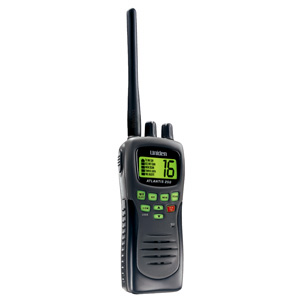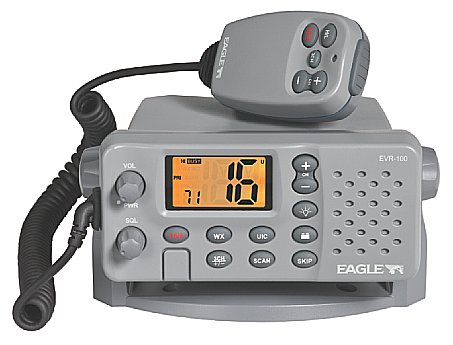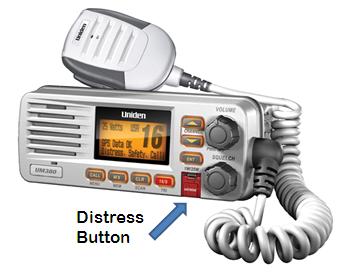Return to Flotilla 43-4's Home Page.
Having a marine (VHF) radio aboard your boat can be a lifesaver. VHF radios are the handiest and fastest way to contact other boaters or to ask for help on the water. In an emergency, when you use a radio, anyone with a radio can hear you and can come to your aid, perhaps sooner than first responders. Or you may be the boater who assists someone because you heard their radio call. VHF radios also have channels for weather information, other boat traffic, and for talking to other boaters (briefly!), and can be used to relay information about hazards to navigation.
When underway, boats with marine (VHF) radios are required to have their radios on
and be monitoring CH 16.
Many boaters in our waters do not think they need a radio because they can just use their cell phones. Cell phones should be used as secondary, or back-up, communications. Think about these things:
When a cell phone is used, |
When a VHF marine radio is used, |
|
1) it takes time to find the number desired before communication starts |
1) push the button and start talking |
|
2) only one person hears the call (assuming you get a connection or phone hasn't gotten wet) |
2) any boater, including first responders on the water, with a radio will hear the call; other boaters will likely be closer than first responders |
|
3) that person, if unable to help directly, will then have to contact someone to aid the boater |
3) first responders hear the call immediately |
|
Conclusion: less efficient to use with slower response time |
Conclusion: much faster and more efficient to use |
| |
| Hand-held radios are very reasonably priced now. Consider ones that float. |
 |
| Built-in radios have more power and can have more features than hand-helds. |
 |
|
DSC radios are becoming more popular. The Digital Selective Calling feature allows accurate information to be transmitted instantly during an emergency. BUT a DSC radio will not work in an emergency if 1) the owner hasn't gotten an MMSI number (it's fast and easy - watch the video below), AND 2) the owner didn't connect the DSC radio to the boat's GPS unit (see your DSC radio instructions or your GPS instructions). Some hand-helds now have DSC and some of those have GPS built into the radio. Some built-in models now are coming out with GPS built in as well. |
 |
How to Use A VHF Radio
1) Make sure power is on (either battery or circuit breaker for radio).
2) Adjust the squelch. Do this by turning the squelch up until you hear annoying static. Then slowly turn the squelch down to where the static sound just disappears.
3) Make sure your radio is on US channels. Sometimes inadvertently the radio gets bumped to international channels. If this happens, the desired channel cannot be heard.
4) Hail the vessel and talk. Vessels can be hailed on CH 16 and CH 9. Once communication is established, then switch to a working channel (e.g. CH 68) to carry on your conversation. Keep in mind that using a VHF radio is for boating business; it's not a telephone for long conversations.
Follow this link for proper radio calling procedures, including some scripts to use, and radio etiquette.
The Coast Guard Auxiliary on Madison waters monitors CH 16 whenever we are out on the water. If your boat becomes disabled or you are in need of other assistance, hail us on CH 16. We are out there to help you!